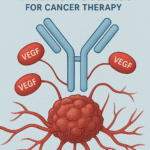Transmembrane Enzyme Linked Receptors, Transmembrane JAK-STAT Binding Receptor and Receptors that regulate Transcription Factors
Transmembrane receptors play a pivotal role in cellular signaling, acting as the communication hubs that transmit external signals into the cell to elicit specific biological responses. These receptors are essential for maintaining cellular homeostasis, coordinating development, and responding to environmental stimuli. Understanding the various types of transmembrane receptors and their signaling mechanisms is fundamental to the field of pharmacology and biomedical research.
Enzyme-linked receptors are a critical class of transmembrane receptors that directly activate intracellular enzymatic activities upon ligand binding. These receptors, which include receptor tyrosine kinases, receptor serine/threonine kinases, and receptor guanylyl cyclases, are involved in a wide range of physiological processes, from growth and differentiation to metabolism and immune responses. They play a significant role in health and disease, making them prime targets for therapeutic intervention.
The Janus kinase-signal transducer and activator of transcription (JAK-STAT) pathway is another essential signaling mechanism mediated by transmembrane receptors. This pathway is activated by various cytokines and growth factors, leading to the regulation of gene expression and influencing processes such as cell growth, differentiation, and immune function. JAK-STAT signaling is critical for hematopoiesis and immune responses, and dysregulation of this pathway is implicated in numerous diseases, including cancers and autoimmune disorders.
Receptors that regulate transcription factors encompass a diverse group that includes nuclear receptors and certain cell surface receptors. These receptors can directly or indirectly modulate gene expression by influencing transcription factors, thereby controlling various aspects of cellular function and development. Examples include steroid hormone receptors, which directly bind to DNA and regulate gene transcription, and Notch receptors, which influence transcription factors through complex signaling cascades.
This article aims to provide a comprehensive overview of these key transmembrane receptors and their signaling mechanisms, highlighting their biological significance and clinical implications. By understanding how these receptors function and how their dysregulation can lead to disease, we can better appreciate the potential for targeted therapies and advancements in medical treatments.
Transmembrane Enzyme-Linked Receptors
Basic Structure of Enzyme-Linked Receptors
- Enzyme-linked receptors are integral membrane proteins that have an extracellular ligand-binding domain, a single transmembrane helix, and an intracellular enzymatic domain.
- When a ligand (such as a hormone or growth factor) binds to the extracellular domain, it induces a conformational change that activates the intracellular enzymatic activity.
General Mechanism of Action
- The binding of a ligand to the extracellular domain triggers dimerization or oligomerization of the receptor, bringing the intracellular enzymatic domains into close proximity.
- This proximity allows for autophosphorylation or activation of the enzymatic domains, which then catalyze phosphorylation of specific tyrosine, serine, or threonine residues on the receptor itself or on downstream signaling proteins.
- The phosphorylation events serve as docking sites for other signaling molecules, initiating various intracellular signaling cascades that ultimately lead to changes in gene expression, cell growth, and metabolism.
Types of Enzyme-Linked Receptors
Receptor Tyrosine Kinases (RTKs): RTKs are a major class of enzyme-linked receptors that phosphorylate tyrosine residues on themselves and on other proteins.
- Examples: Epidermal growth factor receptor (EGFR), insulin receptor, vascular endothelial growth factor receptor (VEGFR).
- Functions: RTKs regulate processes such as cell growth, differentiation, survival, and metabolism.
Mechanism of Activation and Signaling Pathways
- Ligand binding to RTKs induces receptor dimerization, activating the tyrosine kinase domain.
- The activated kinase domain autophosphorylates tyrosine residues on the receptor, creating binding sites for downstream signaling proteins.
- Key pathways activated by RTKs include the RAS/MAPK pathway, the PI3K/AKT pathway, and the JAK/STAT pathway.
Receptor Serine/Threonine Kinases: These receptors phosphorylate serine and threonine residues on themselves and on other proteins.
- Examples: Transforming growth factor-beta (TGF-β) receptors, bone morphogenetic protein (BMP) receptors.
- Functions: They play roles in regulating development, differentiation, apoptosis, and tissue homeostasis.
Mechanism of Activation and Signaling Pathways
- Ligand binding induces receptor dimerization and activation of the serine/threonine kinase domain.
- The activated kinase phosphorylates serine/threonine residues on the receptor and downstream signaling proteins.
- The SMAD signaling pathway is a key pathway activated by receptor serine/threonine kinases.
Receptor Guanylyl Cyclases: These receptors convert GTP to cyclic GMP (cGMP) upon activation.
- Examples: Atrial natriuretic peptide (ANP) receptors, guanylyl cyclase C.
- Functions: They are involved in regulating blood pressure, electrolyte homeostasis, and intestinal fluid balance.
Mechanism of Activation and Signaling Pathways
- Ligand binding activates the guanylyl cyclase domain, leading to the conversion of GTP to cGMP.
- cGMP acts as a second messenger, activating protein kinase G (PKG) and other downstream effectors.
- The cGMP pathway regulates various physiological processes, including vasodilation and inhibition of platelet aggregation.
Clinical Significance
Role in Health and Disease
- Dysregulation of enzyme-linked receptors can lead to various diseases, including cancers, cardiovascular diseases, and metabolic disorders.
- Overactive RTKs, for example, are commonly associated with cancer, as they can lead to uncontrolled cell proliferation and survival.
Therapeutic Targets and Drug Development
- Enzyme-linked receptors are important targets for drug development. Inhibitors of RTKs (such as tyrosine kinase inhibitors) are used to treat certain cancers.
- Monoclonal antibodies targeting RTKs are also used in cancer therapy to block ligand binding or receptor dimerization.
- Drugs targeting receptor guanylyl cyclases are used to treat cardiovascular diseases by modulating blood pressure and fluid balance.
Transmembrane JAK-STAT Binding Receptor
Basic Structure of JAK-STAT Binding Receptors
- JAK-STAT binding receptors are a type of transmembrane receptor that interact with Janus kinases (JAKs) and signal transducers and activators of transcription (STATs).
- These receptors typically have an extracellular ligand-binding domain, a single transmembrane domain, and an intracellular domain that interacts with JAKs.
- Unlike other receptors, the intracellular domain does not have intrinsic enzymatic activity but relies on associated JAK proteins for signal transduction.
General Mechanism of Action
- Upon ligand binding, the receptor undergoes a conformational change that brings two or more receptor molecules together (dimerization or oligomerization).
- This receptor clustering allows the associated JAKs to phosphorylate each other (trans-phosphorylation), activating their kinase activity.
- Activated JAKs then phosphorylate specific tyrosine residues on the receptor, creating docking sites for STAT proteins.
- The bound STAT proteins are subsequently phosphorylated by JAKs, leading to their dimerization and translocation to the nucleus, where they regulate gene expression.
JAK-STAT Signaling Pathway
- The JAK-STAT pathway is a direct signaling mechanism that transmits signals from extracellular cytokines and growth factors to the nucleus, leading to changes in gene expression.
- This pathway is crucial for regulating immune responses, cell growth, differentiation, and hematopoiesis.
Steps Involved in the Signaling Process
Ligand Binding and Receptor Activation: Cytokines or growth factors bind to the extracellular domain of the JAK-STAT receptor, inducing receptor dimerization or oligomerization.
Activation of Janus Kinases (JAKs): The close proximity of receptor-associated JAKs allows them to phosphorylate each other on specific tyrosine residues, activating their kinase function.
Phosphorylation and Dimerization of STAT Proteins: Activated JAKs phosphorylate specific tyrosine residues on the intracellular domain of the receptor, creating docking sites for STAT proteins. STAT proteins bind to these phosphorylated tyrosines via their SH2 domains and are themselves phosphorylated by JAKs. Phosphorylated STATs dimerize, forming active transcription factors.
Translocation of STAT Dimers to the Nucleus and Gene Regulation: The STAT dimers translocate to the nucleus, where they bind to specific DNA sequences and regulate the transcription of target genes.
Examples of JAK-STAT Receptors
Cytokine Receptors: Interleukin Receptors: These receptors bind to interleukins (e.g., IL-2, IL-6) and play a vital role in immune system regulation and inflammatory responses.
Growth Hormone Receptors: These receptors bind to growth hormone, regulating growth and metabolism by activating the JAK-STAT pathway.
Prolactin Receptors: These receptors bind to prolactin, influencing lactation and other reproductive functions through the JAK-STAT signaling pathway.
Clinical Significance
Role in Immune Response and Hematopoiesis
- The JAK-STAT pathway is essential for immune cell development, differentiation, and function. It regulates the production and activity of various cytokines and growth factors involved in immune responses.
- It also plays a crucial role in hematopoiesis, controlling the development and function of blood cells.
Therapeutic Targets and Drug Development
- Dysregulation of the JAK-STAT pathway is implicated in various diseases, including autoimmune disorders, cancers, and inflammatory conditions.
- JAK inhibitors (e.g., tofacitinib, ruxolitinib) have been developed to target this pathway, providing therapeutic options for conditions such as rheumatoid arthritis, myelofibrosis, and certain cancers.
- These inhibitors block the kinase activity of JAKs, preventing the phosphorylation and activation of STAT proteins, thereby modulating the expression of genes involved in disease processes.
Receptors that Regulate Transcription Factors
Importance of Transcription Factors in Gene Expression
- Transcription factors are proteins that bind to specific DNA sequences, regulating the transcription of genes. They play a crucial role in controlling various cellular processes, including development, differentiation, metabolism, and response to environmental stimuli.
- Receptors that regulate transcription factors influence these processes by modulating the activity, localization, or expression of transcription factors, thereby controlling gene expression.
How Receptors Influence Transcription Factors: Receptors can regulate transcription factors through direct interaction or via complex signaling pathways. They may activate or inhibit transcription factors, affecting their ability to bind DNA and modulate gene transcription.
Types of Receptors Regulating Transcription Factors
Nuclear Receptors: Nuclear receptors are a class of intracellular receptors that directly regulate gene expression by binding to DNA as ligand-activated transcription factors.
- Examples: Steroid hormone receptors (e.g., glucocorticoid receptor, estrogen receptor), thyroid hormone receptors, retinoic acid receptors.
- Functions: They regulate a wide range of physiological processes, including metabolism, reproduction, immune response, and development.
Mechanism of Action in Gene Regulation
- Ligand Binding: Lipophilic hormones (e.g., steroids, thyroid hormones) diffuse through the cell membrane and bind to nuclear receptors in the cytoplasm or nucleus.
- Receptor Activation: Ligand binding induces a conformational change in the receptor, activating it and often resulting in dimerization.
- DNA Binding: Activated nuclear receptors bind to specific DNA sequences called hormone response elements (HREs) in the promoter regions of target genes.
- Transcriptional Regulation: The receptor-DNA complex recruits coactivators or corepressors, along with the transcriptional machinery, to modulate the transcription of target genes.
Cell Surface Receptors: Certain cell surface receptors can regulate transcription factors through intracellular signaling cascades, even though they do not directly bind to DNA.
- Examples: Notch receptors, Wnt receptors (Frizzled), and TGF-β receptors.
- Functions: These receptors play key roles in development, cell fate determination, and tissue homeostasis.
Mechanism of Action in Gene Regulation
- Ligand Binding and Receptor Activation: Ligands bind to cell surface receptors, triggering conformational changes and receptor activation.
- Signal Transduction: Activated receptors initiate intracellular signaling cascades that can modify transcription factors or signaling proteins.
- Translocation and DNA Binding: Modified transcription factors translocate to the nucleus, where they bind to specific DNA sequences and regulate gene transcription.
Examples:
- Notch Signaling Pathway: Ligand binding to Notch receptors triggers proteolytic cleavage, releasing the Notch intracellular domain (NICD). NICD translocates to the nucleus, interacts with transcription factors, and regulates target gene expression.
- Wnt Signaling Pathway: Wnt binding to Frizzled receptors stabilizes β-catenin, which accumulates and translocates to the nucleus to regulate gene transcription.
Clinical Significance
Role in Development, Metabolism, and Disease
- Receptors that regulate transcription factors are critical for normal development and physiological functions. Dysregulation of these receptors or their signaling pathways can lead to various diseases, including developmental disorders, cancers, metabolic syndromes, and immune-related conditions.
- For example, mutations in nuclear receptors can lead to hormonal imbalances and metabolic disorders, while aberrant signaling through cell surface receptors like Notch can result in cancers and developmental abnormalities.
Therapeutic Targets and Drug Development
- Targeting receptors that regulate transcription factors offers significant therapeutic potential. Drugs can be designed to modulate the activity of these receptors, providing treatments for a range of conditions.
Nuclear Receptor Modulators:
- Agonists: Drugs like glucocorticoids and thyroid hormone replacements act as agonists, mimicking the action of natural ligands to regulate gene expression.
- Antagonists: Drugs like selective estrogen receptor modulators (SERMs) and anti-androgens block receptor activity, used in treatments for breast and prostate cancers.
Inhibitors of Signaling Pathways:
- Notch Inhibitors: Targeting the Notch signaling pathway can be beneficial in treating cancers where Notch signaling is aberrantly activated.
- Wnt Pathway Inhibitors: These are being explored for their potential in treating cancers and fibrotic diseases.
Conclusion
Transmembrane receptors are essential components of cellular communication, translating extracellular signals into precise intracellular responses. This article explored the diverse mechanisms and roles of enzyme-linked receptors, JAK-STAT binding receptors, and receptors that regulate transcription factors, highlighting their critical functions in maintaining cellular homeostasis and coordinating complex physiological processes.
Enzyme-linked receptors, such as receptor tyrosine kinases, receptor serine/threonine kinases, and receptor guanylyl cyclases, play pivotal roles in regulating growth, metabolism, and immune responses. Their dysregulation is associated with various diseases, making them significant targets for therapeutic intervention.
The JAK-STAT signaling pathway, mediated by transmembrane receptors, is fundamental to immune responses and hematopoiesis. Understanding its detailed mechanisms has paved the way for the development of JAK inhibitors, providing effective treatments for autoimmune disorders, cancers, and inflammatory conditions.
Receptors that regulate transcription factors, including nuclear receptors and certain cell surface receptors, directly influence gene expression and control vital processes such as development, differentiation, and metabolism. Targeting these receptors with specific modulators has immense therapeutic potential for treating hormonal imbalances, cancers, and other diseases.
In summary, a comprehensive understanding of these receptors and their signaling pathways is crucial for advancing medical research and developing innovative treatments. By unraveling the complexities of transmembrane receptor functions and their regulatory mechanisms, we can continue to improve therapeutic strategies and enhance patient outcomes. Future research in this area holds the promise of discovering novel targets and developing more precise and effective therapies.
For more regular updates you can visit our social media accounts,
Instagram: Follow us
Facebook: Follow us
WhatsApp: Join us
Telegram: Join us



